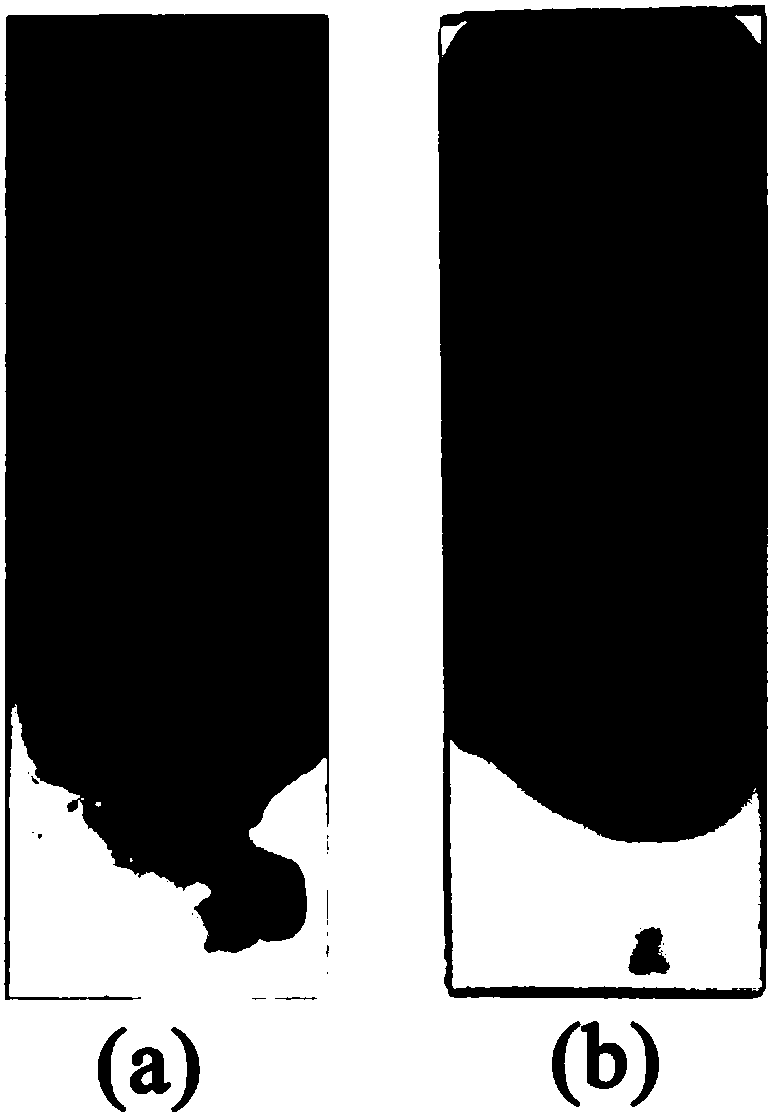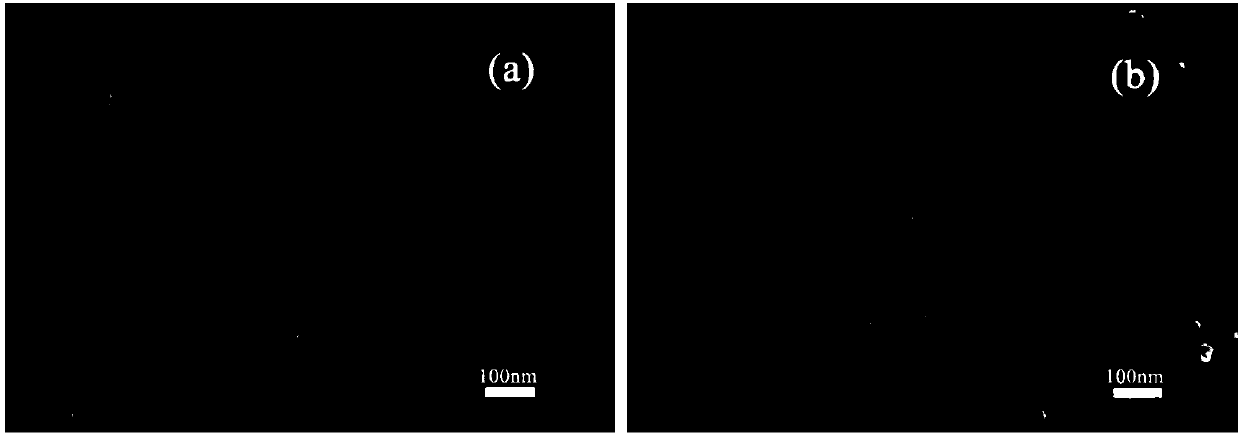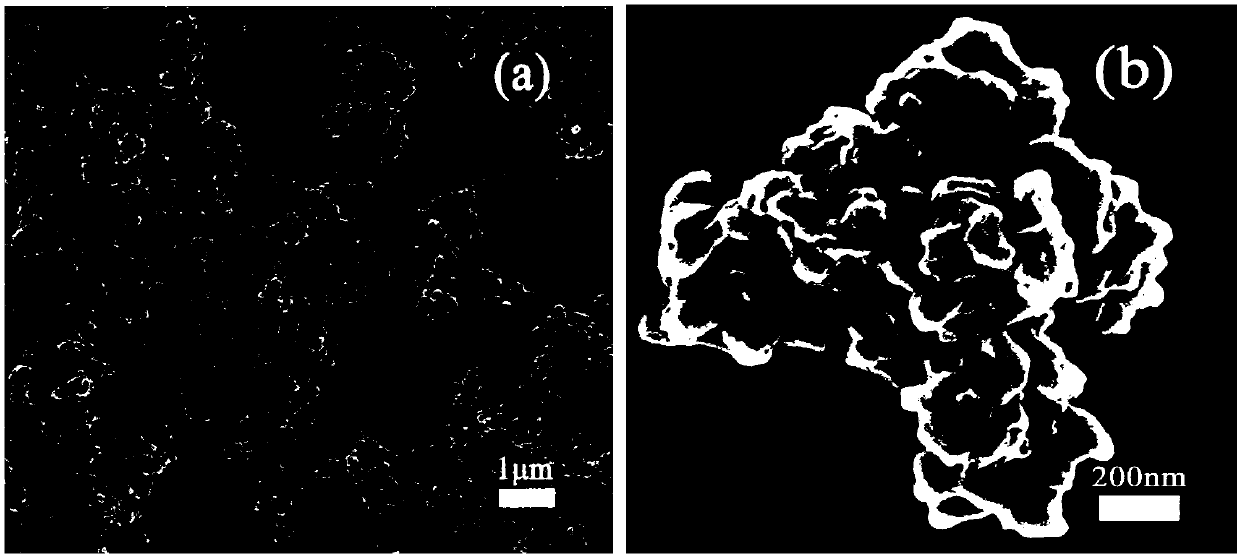Conductive composite waterborne adhesive as well as one-pot preparation method and application thereof
A water-based binder and conductive agent technology, applied in conductive adhesives, grafted polymer adhesives, adhesives, etc., can solve the unfavorable commercial application of electric vehicle new energy industry development, reduce battery energy density and bulk density , the reduction of the conductive connection of particles in the electrode, etc., to achieve the effects of excellent adhesion and peel strength, excellent electronic conductivity, and excellent dispersibility
- Summary
- Abstract
- Description
- Claims
- Application Information
AI Technical Summary
Problems solved by technology
Method used
Image
Examples
Embodiment 1
[0052] Embodiment 1: Preparation of PVA-g-PAA / PEDOT:PSS conductive composite water-based binder:
[0053] Under the protection of an inert atmosphere of argon, weigh 0.2g of polyvinyl alcohol (PVA) and dissolve it in 30g of deionized water (DI-Water), stir thoroughly for 2 to 5 hours to remove oxygen to obtain a uniform and well-dispersed solution, the stirring speed 250 rpm. Then add 2g double-bond-containing acrylic acid (AA) monomer, 0.71g conductive polymer monomer 3,4-ethylenedioxythiophene (EDOT), and 1.545g polystyrene sulfonate sodium (PSSNa, dopant) to In the above solution, fully stir to obtain a mixed solution; then use the dropping funnel to slowly add the initiator Na 2 S 2 o 8 / NaHSO 3 (1.805g Na 2 S 2 o 8 and 0.006g NaHSO 3 Pre-dissolved in 10gDI-Water, the amount of the initiator is 3.9wt.% of the total mass of the system), simultaneously initiates the polymer graft polymerization and the chemical oxidation polymerization of the conductive polymer monom...
Embodiment 2
[0057] Referring to Example 1, the difference is that the added conductive polymer monomer 3,4-ethylenedioxythiophene (EDOT) is 1.109g, sodium polystyrene sulfonate (PSSNa, dopant) is 2.413g, The initiator is 2.806g Na 2 S 2 o 8 / 0.006gNaHSO 3 , The dosage of the initiator is 5.8wt.% of the total mass of the system. The content of the conductive polymer in the conductive composite water-based binder is 7.25wt.%, the addition of the conductive polymer monomer (EDOT) is 2.28wt.% of the total mass of the system, and the hydroxyl-containing water-based polymer (PVA) and the The mass ratio of the double bond grafting monomer (AA) is 1:10. The prepared PVA-g-PAA / PEDOT:PSS conductive composite aqueous binder was coated on a glass slide, and its electronic conductivity was measured with an RTS-9 four-probe tester, as shown in Table 1.
Embodiment 3
[0061] Referring to Example 1, the difference is that the added acrylic acid (AA) monomer is 0.02g, the conductive polymer monomer 3,4-ethylenedioxythiophene (EDOT) is 1.0g, sodium polystyrene sulfonate ( PSSNa, dopant) is 0.725g, initiator is 2.532g (NH 4 ) 2 S 2 o 8 / 0.006g NaHSO 3 , the amount of the initiator is 5.7wt.% of the total mass of the system. The content of the conductive polymer in the conductive composite water-based binder is 3.88 wt.%, the addition of the conductive polymer monomer (EDOT) is 2.25 wt.% of the total mass of the system, and the hydroxyl-containing water-based polymer (PVA) and the The mass ratio of the double bond grafting monomer (AA) is 1:0.1. The prepared PVA-g-PAA / PEDOT:PSS conductive composite aqueous binder was coated on a glass slide, and its electronic conductivity was measured with an RTS-9 four-probe tester, as shown in Table 1.
[0062] Table 1 Comparison of electronic conductivity of PVA-g-PAA / PEDOT:PSS conductive composite wat...
PUM
| Property | Measurement | Unit |
|---|---|---|
| viscosity | aaaaa | aaaaa |
| viscosity | aaaaa | aaaaa |
| viscosity | aaaaa | aaaaa |
Abstract
Description
Claims
Application Information
 Login to View More
Login to View More - R&D
- Intellectual Property
- Life Sciences
- Materials
- Tech Scout
- Unparalleled Data Quality
- Higher Quality Content
- 60% Fewer Hallucinations
Browse by: Latest US Patents, China's latest patents, Technical Efficacy Thesaurus, Application Domain, Technology Topic, Popular Technical Reports.
© 2025 PatSnap. All rights reserved.Legal|Privacy policy|Modern Slavery Act Transparency Statement|Sitemap|About US| Contact US: help@patsnap.com



